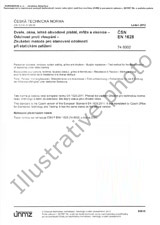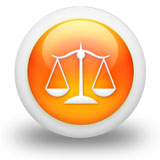We need your consent to use the individual data so that you can see information about your interests, among other things. Click "OK" to give your consent.
ČSN ETSI EN 302729-V2.1.1 (875158)
Short Range Devices (SRD); Level Probing Radar (LPR) equipment operating in the frequency ranges 6 GHz to 8,5 GHz, 24,05 GHz to 26,5 GHz, 57 GHz to 64 GHz, 75 GHz to 85 GHz; Harmonised Standard covering the essential requirements of article 3.2 of the Directive 2014/53/EU
Translate name
STANDARD published on 1.6.2017
The information about the standard:
Designation standards: ČSN ETSI EN 302729-V2.1.1
Classification mark: 875158
Catalog number: 502117
Publication date standards: 1.6.2017
SKU: NS-684719
The number of pages: 96
Approximate weight : 319 g (0.70 lbs)
Country: Czech technical standard
Category: Technical standards ČSN
The category - similar standards:
Receiving and transmitting equipmentElectromagnetic compatibility in general
Annotation of standard text ČSN ETSI EN 302729-V2.1.1 (875158):
V2.1.1
The present document applies to the following equipment types:
Level Probing Radar (LPR) applications are based on pulse RF, FMCW, or similar wideband techniques.
The present document contains requirements to demonstrate that LPR equipment both effectively uses and supports the efficient use of radio spectrum in order to avoid harmful interference.
Table 1 shows a list of the frequency bands as assigned to Level Probing Radars in the European Commission Decision 2013/752/EU [i.13] on harmonised deployment conditions for industrial Level Probing Radars (LPR) as known at the date of publication of the present document.
Technical and regulatory requirements for LPR are provided in ECC Decision (11)02 [i.20], which are based on ECC Report 139 [i.8].
LPRs are used in many industries concerned with process control to measure the amount of various substances (mostly liquids or granulates). LPRs are used for a wide range of applications such as process control, custody transfer measurement (government legal measurements), water and other liquid monitoring, spilling prevention and other industrial applications. The main purposes of using LPRs are:
- - to increase reliability by preventing accidents;
- - to increase industrial efficiency, quality and process control;
- - to improve environmental conditions in production processes.
LPRs always consist of a combined transmitter and receiver and are used with an integral or dedicated antenna. The LPR equipment is for professional applications where installation and maintenance are performed by professionally trained individuals only.
NOTE: LPR antennas are always specific directive antennas and no LPR omnidirectional antennas are used. This is also important in order to limit the illuminated surface area as well as to control and limit the scattering caused by the edges of the surface.
The scope is limited to LPRs operating as Short Range Devices (SRD).
The LPR applications in the present document are not intended for communications purposes
Preview of the standard ČSN ETSI EN 302729-V2.1.1 (875158)
We recommend:
Updating of laws
Do you want to be sure about the validity of used regulations?
We offer you a solution so that you could use valid and updated legislative regulations.
Would you like to get more information? Look at this page.




 Cookies
Cookies
